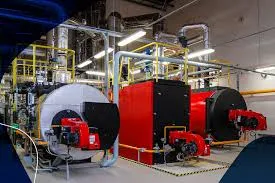
Dec . 21, 2024 14:02 Back to list
Optimal Temperature Settings for Hot Water Boilers Explained
When it comes to setting the temperature for a hot water boiler, it’s essential to balance efficiency, safety, and comfort. The optimal temperature can vary based on specific needs, but there are general guidelines that can help homeowners and property managers make informed decisions.
Understanding Boiler Temperature Settings
Most professionals recommend setting your hot water boiler to a temperature between 120°F to 140°F (49°C to 60°C). This range is widely regarded as ideal for several reasons.
Firstly, setting the temperature at 120°F is generally sufficient for most household tasks such as washing dishes, bathing, and laundry while significantly reducing the risk of scalding. Water at this temperature can cause burns, but the risk is substantially lowered compared to higher settings. For instance, water at 140°F can cause burns within just a few seconds.
Safety Considerations
Safety should always be a priority when it comes to hot water systems. According to the U.S. Consumer Product Safety Commission (CPSC), setting your water heater at or below 120°F can help prevent scalding injuries, particularly for children and the elderly, who may be more vulnerable. Additionally, scalds from hot water can occur quickly, and maintaining a lower temperature is an effective method to mitigate this hazard.
Energy Efficiency
what temperature should a hot water boiler be set at

In terms of energy efficiency, setting your boiler to 120°F can lead to significant savings on energy bills over time. Water heaters account for a considerable portion of a home's energy usage, and by reducing the temperature, homeowners can decrease energy consumption and lower their utility bills. Moreover, every 10°F reduction in water heater temperature can save between 3% to 5% in energy costs.
When to Consider Higher Temperatures
There are circumstances where a higher temperature setting may be warranted. For example, some dishwashers and washing machines are designed to operate with hotter water, around 140°F, to effectively sanitize dishes and clothes. If your appliances have specific recommendations regarding water temperature, it’s essential to consider them when setting your boiler. Additionally, if you’re concerned about bacterial growth, especially Legionella, which can thrive in lukewarm water, increasing the temperature temporarily can help. However, it is crucial to balance this with safety and comfort concerns.
Maintenance and Monitoring
Regular maintenance of your hot water boiler is crucial for both efficiency and safety. Sediment buildup can affect the unit's ability to heat water to the desired temperature, so periodic flushing of the tank is recommended. Moreover, consider installing a thermostat that can be easily monitored or adjusted. Digital thermostats often come with features that allow for programming, which can help maintain appropriate temperatures while optimizing energy use.
Conclusion
Ultimately, the right temperature setting for your hot water boiler depends on your specific needs, safety considerations, and the appliances you use. Keeping the temperature around 120°F offers a blend of safety and efficiency for the average household. However, it’s essential to be aware of special circumstances where adjustments may be necessary, always prioritizing the safety of everyone in the home. By understanding the implications of temperature settings and maintaining your boiler effectively, you can ensure a consistent and safe hot water supply for your household.
-
High-Efficiency Commercial Oil Fired Steam Boiler for Industry
NewsJul.30,2025
-
High-Efficiency Biomass Fired Thermal Oil Boiler Solutions
NewsJul.30,2025
-
High Efficiency Gas Fired Thermal Oil Boiler for Industrial Heating
NewsJul.29,2025
-
High-Efficiency Gas Fired Hot Water Boiler for Sale – Reliable & Affordable
NewsJul.29,2025
-
High Efficiency Biomass Fired Hot Water Boiler for Industrial and Commercial Use
NewsJul.29,2025
-
High-Efficiency Biomass Fired Hot Water Boiler for Industrial Use
NewsJul.28,2025
Related PRODUCTS






















